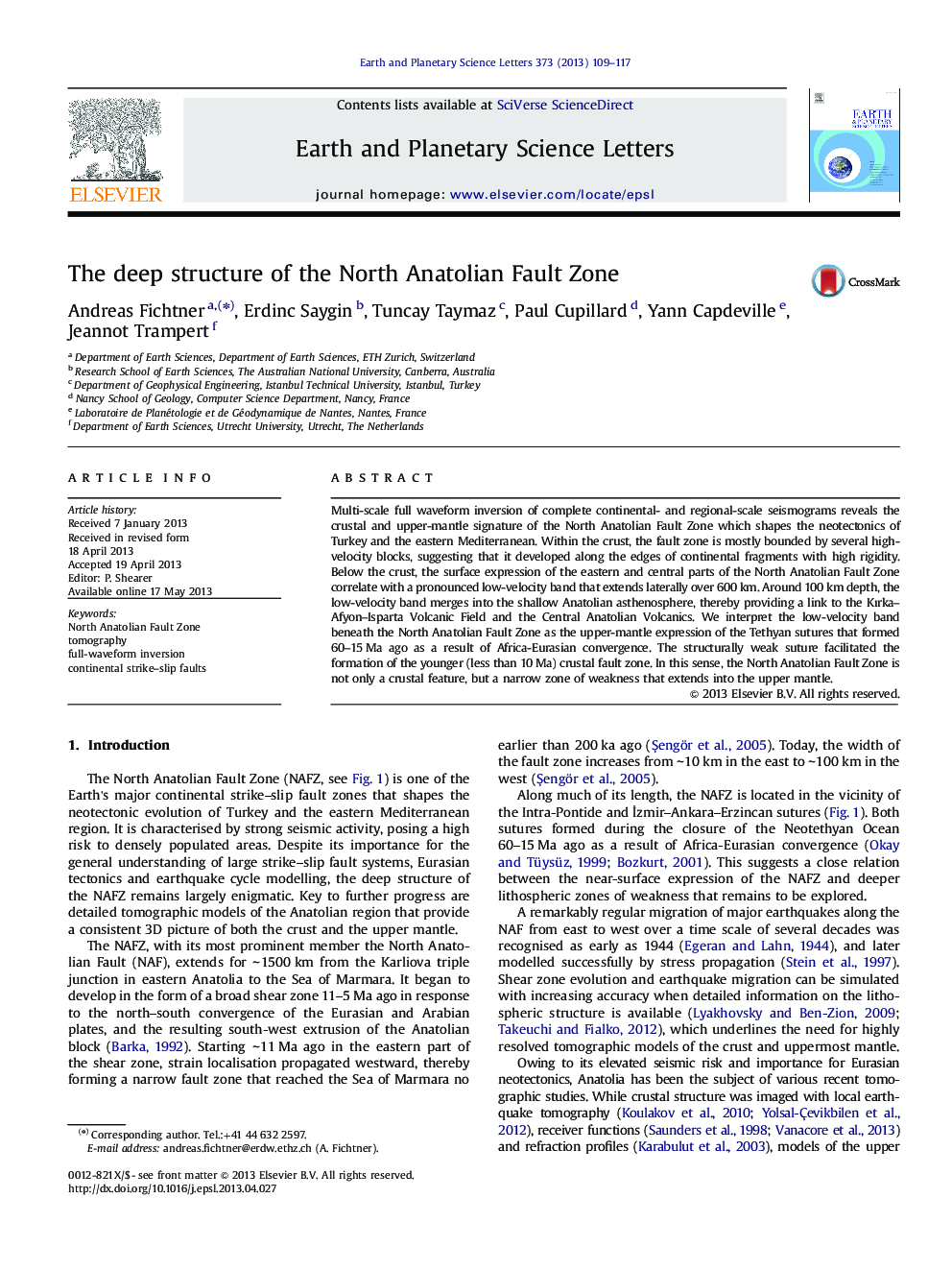| Article ID | Journal | Published Year | Pages | File Type |
|---|---|---|---|---|
| 4677070 | Earth and Planetary Science Letters | 2013 | 9 Pages |
•Development and application of a multi-scale full waveform inversion.•Simultaneous resolution of crustal and mantle structure.•The North Anatolian Fault Zone appears as a low-velocity band extending to around 100 km depth.•Related to Tethyan sutures that persist as zones of weakness.•The North Anatolian Fault Zone is not only a crustal feature but extends into the upper mantle.
Multi-scale full waveform inversion of complete continental- and regional-scale seismograms reveals the crustal and upper-mantle signature of the North Anatolian Fault Zone which shapes the neotectonics of Turkey and the eastern Mediterranean. Within the crust, the fault zone is mostly bounded by several high-velocity blocks, suggesting that it developed along the edges of continental fragments with high rigidity. Below the crust, the surface expression of the eastern and central parts of the North Anatolian Fault Zone correlate with a pronounced low-velocity band that extends laterally over 600 km. Around 100 km depth, the low-velocity band merges into the shallow Anatolian asthenosphere, thereby providing a link to the Kırka–Afyon–Isparta Volcanic Field and the Central Anatolian Volcanics. We interpret the low-velocity band beneath the North Anatolian Fault Zone as the upper-mantle expression of the Tethyan sutures that formed 60–15 Ma ago as a result of Africa-Eurasian convergence. The structurally weak suture facilitated the formation of the younger (less than 10 Ma) crustal fault zone. In this sense, the North Anatolian Fault Zone is not only a crustal feature, but a narrow zone of weakness that extends into the upper mantle.
